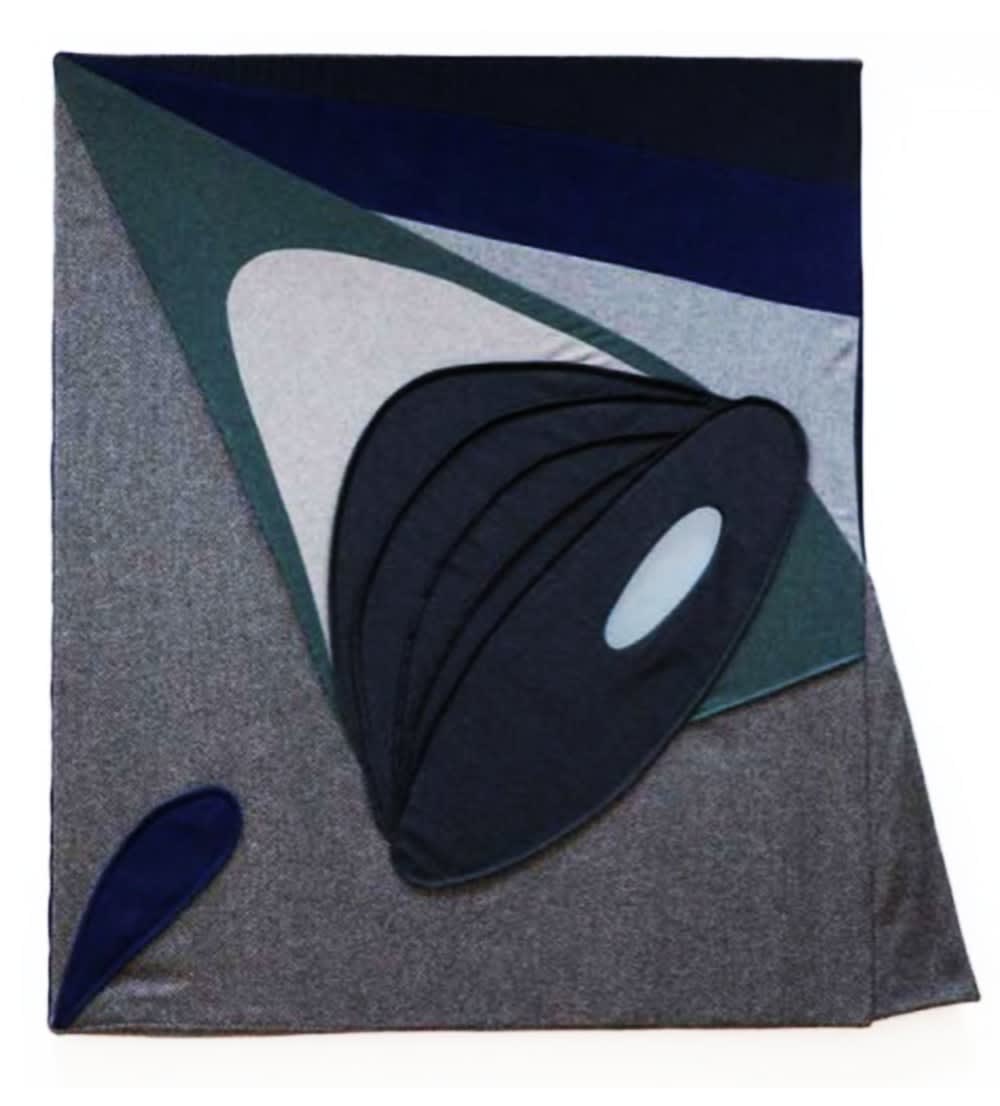Laura Lima
Violeta, 2014/2015
madeira, vidro e tecido
[wood, glass and fabric]
[wood, glass and fabric]
150.5 x 125.5 x 6 cm
[59 1/4 x 49 3/8 x 2 3/8 in]
[59 1/4 x 49 3/8 x 2 3/8 in]
Os retratos vêm de um processo que se chama Alfaiataria, onde alfaiates traduzem anotações feitas pela artista sobre a representação abstrata de pessoas, algumas conhecidas e outras que partem de...
Os retratos vêm de um processo que se chama Alfaiataria, onde alfaiates traduzem anotações feitas pela artista sobre a representação abstrata de pessoas, algumas conhecidas e outras que partem de seu imaginário ou de referências da história. As instruções são desenhos abstratos retratando a pessoa a ser representada, além de apontamentos sobre qual tipo moldura e de tecido deverá ser usado. Então a partir de uma primeira conversa os profissionais da alta costura transpõem tais elementos em cor, materiais e formas em frente e verso – assim como os retratistas da pintura outrora trabalhavam as questões bidimensionais e de perspectiva – e vestem, tridimensionalmente, os “Portraits”.
The portraits comes from a process of tailoring, where tailors translate notes made by the artist about the abstract representation of people, some known and others from her imaginary or from references of history. The instructions are abstract drawings depicting the person to be represented, as well as remarks on which type of frame and fabric should be used. Then, from the first conversation, haute couture professionals transpose these elements in color, materials and shapes in front and back – just as the paintors used to work with two-dimensional and perspective point – and dress on the “Portraits” three-dimensionally.
The portraits comes from a process of tailoring, where tailors translate notes made by the artist about the abstract representation of people, some known and others from her imaginary or from references of history. The instructions are abstract drawings depicting the person to be represented, as well as remarks on which type of frame and fabric should be used. Then, from the first conversation, haute couture professionals transpose these elements in color, materials and shapes in front and back – just as the paintors used to work with two-dimensional and perspective point – and dress on the “Portraits” three-dimensionally.
